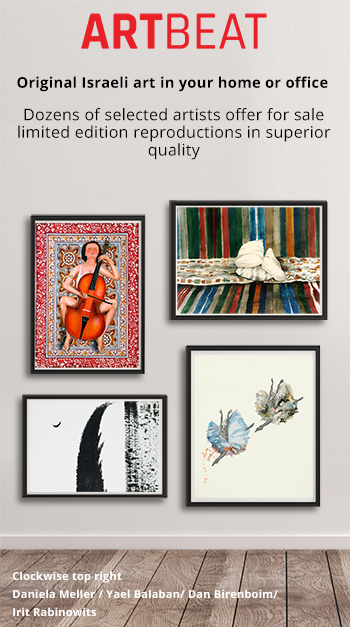Art Shows > Over My Dead Body
Over My Dead Body / Rosenfeld Galleryטלפון - 972-3-5229044 30/04/2022 to - 11/06/2022 In Roni Landa's artistic practice, two worlds of content are fused - one deals with science and medicine and the other with the history of art. On the face of it, these are separate areas, but an in-depth look reveals the variety of contexts that are visually expressed in the sculptural objects displayed in the exhibition. A major reference in her work is 17th-century Dutch bouquets, which belong to the still-nature genre. These images, with their intense color and richness of shapes and textures, seem realistic at first glance but in fact do not represent reality, since in the laden compositions the artists have incorporated flowers from distant geographical areas that bloom in different seasons. This is in addition to the mismatch between the height and weight of the huge bouquets and the small vases in which they are placed. Botanically, these are impossible aliens, but as objects of painting they carry cultural and symbolic meanings. The multiplicity and variety of varieties is an expression of wealth, social status and economic abundance. In keeping with the spirit of the period, which was imbued with a belief in the divine presence, the very realist painting was perceived as an act of reverence for God, and certain flowers such as the rose, lily and violet symbolized specific themes in Christianity. In many of the paintings, the passing of time and the ephemerality of nature are depicted through the life cycle of the flower - budding, blooming, flowering, withering and decay. Another source of inspiration is found in anatomical images created during the Renaissance and up to the 19th century. They originate from charts for the study of medicine, which also constituted a declaration of human beings as the creations of God and the nature of life and death. One of the unusual means of studying anatomy was a wax model in the form of a life-size woman, with glass eyes and human hair, dressed and adorned with jewelry. The anatomical Venus of Clemente Susini , created in 1780, disintegrated into seven anatomical layers that include all the internal organs. Its design as a kind of 'beautiful nap' creates a dissonance between its exterior and its gaping bowels. To modern eyes it looks strange, a clear example of the 'threatened' ( Uncanny ) and despicable, which is usually hidden under the skin envelope. Similar to looking into a human body, delving into the works displayed in the exhibition provides a delightful and daunting experience at the same time. The gaze on the whole object becomes disjointed and intrusive, clinical and voyeuristic alike, connecting to the worlds of science and medicine or in exchange for human intimacy. The body is presented as a set of violent, sensual, erotic and vulnerable moments. Compared to the anatomical Venus, whose perfect body is unharmed, Roni's flowers bear evidence of human conditions and are therefore often damaged and scarred. The entire installation produces a mix of exterior and interior without a hierarchy of attraction, reluctance, beauty, pain and pleasure. Roni Landa (b. 1986) lives and works in Tel Aviv. Bachelor of Arts ( MFA ) from Bezalel, 2020. Bachelor of Textiles ( B.design ) from Shenkar, 2011. Exhibited in many exhibitions in Israel and around the world, including the Israel Jerusalem Museum, Tel Aviv Museum of Art, Tel Aviv City Hall, Janko-Dada Museum Ein Hod, Jerusalem Design Week, Bedford Gallery, California, Moscow Jewish Museum and more. Her works are included in private collections in Israel and around the world, including the Barzilai-Hollander scroll collection, Brussels. [1] Arthur K. Wheelock Jr., From Botany to Bouquets: Flowers in Northern Art National Gallery of Art, Washington, 1999. 2 Joanna Ebenstein, The Anatomical Venus , London: Thames & Hudson, 2016. Arthur K. Wheelock Jr., From Botany to Bouquets: Flowers in Northern Art National Gallery of Art, Washington, 1999 Joanna Ebenstein, The Anatomical Venus , London: Thames & Hudson, 2016. location - Rosenfeld Gallery Time - 30/04/2022 to - 11/06/2022 Exhibition opening - 30/04/2022, שעה - 19:00 |
The content appearing on this page and the details of this exhibition are shown on the behalf of the advertisers and on their responsibility.
All rights reserved to - artbeat.co.il © Israel Art
|1|



